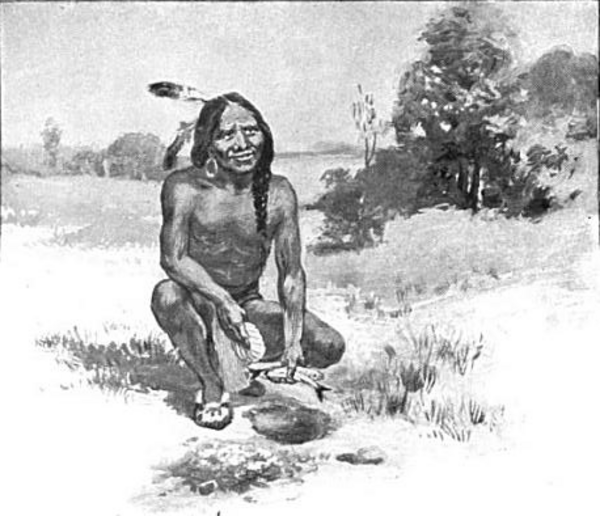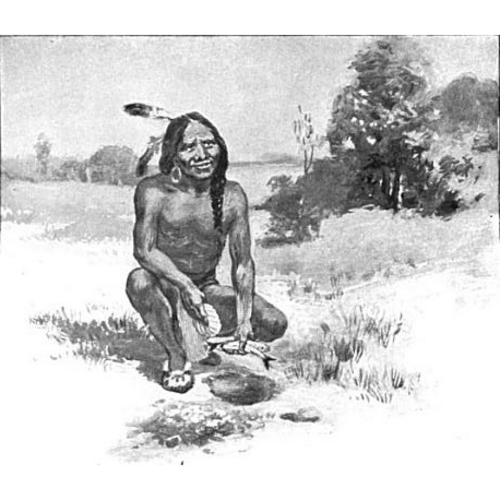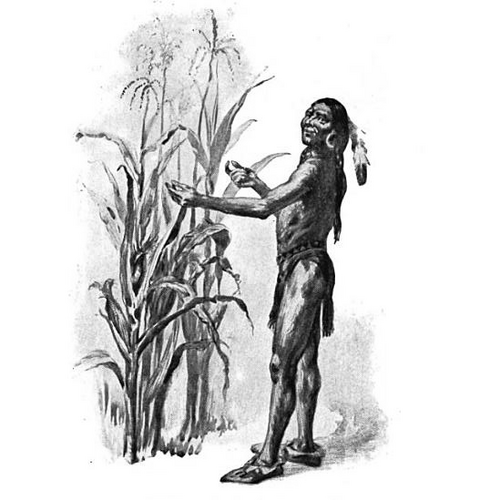
Source: Courtesy of Wikimedia Commons
TISQUANTUM (Squanto, Squantum, Tasquantum), English-speaking Indian of Pawtuxet (Plymouth, Mass.); d. 1622 at Manamoick (now Chatham), Mass.
Tisquantum has been identified as one of the Maine Indians taken to England by Capt. George Waymouth in 1605 but the authority for this is far from certain. He was put ashore at Cape Cod by Capt. John Smith in 1614. After the departure of Capt. Smith, Capt. Thomas Hunt seized more than 20 Indians, including Tisquantum, to be sold in Spain as slaves. Tisquantum escaped to London and lived there at the home of John Slaney, treasurer of the Newfoundland company, who sent him to Newfoundland two years later. He landed at Cuper’s (now Cupids) Cove where John Mason and Thomas Dermer had settled. Dermer took Tisquantum back to England in 1618 but returning to America the next year, he cruised along the coast of New England and put Tisquantum ashore. He was then the sole survivor of his tribe, all the others having died of smallpox while he was away.
Tisquantum is best known as the Indian who visited the Pilgrims at Plymouth Bay in March 1621 and who became their interpreter.
Tisquantum should not be confused with Squando (Squanto in JR), the Sokoki or Abenaki sagamo at Saco, Maine, who burned the English settlement there on 18 Sept. 1675, after the English had drowned his wife and baby.
DAB (Squanto). L. N. Kinnicutt, “Plymouth settlement and Tisquantum,” Mass. Hist. Soc. Proc., XLVIII (1914–15), 103–18. R. A. Preston, Gorges of Plymouth Fort (Toronto, 1953). John Smith, Travels and Works, ed. E. Arber (2v., Birmingham, 1884–1910). H. M. Sylvester, Indian Wars of New England (3v., Boston, 1910), I, 36, 74, 75, 115, 116, 140.
Cite This Article
W. Austin Squires, “TISQUANTUM (Squanto, Squantum, Tasquantum),” in Dictionary of Canadian Biography, vol. 1, University of Toronto/Université Laval, 2003–, accessed January 7, 2026, https://www.biographi.ca/en/bio/tisquantum_1E.html.
The citation above shows the format for footnotes and endnotes according to the Chicago manual of style (16th edition). Information to be used in other citation formats:
| Permalink: | https://www.biographi.ca/en/bio/tisquantum_1E.html |
| Author of Article: | W. Austin Squires |
| Title of Article: | TISQUANTUM (Squanto, Squantum, Tasquantum) |
| Publication Name: | Dictionary of Canadian Biography, vol. 1 |
| Publisher: | University of Toronto/Université Laval |
| Year of publication: | 1966 |
| Year of revision: | 1979 |
| Access Date: | January 7, 2026 |




